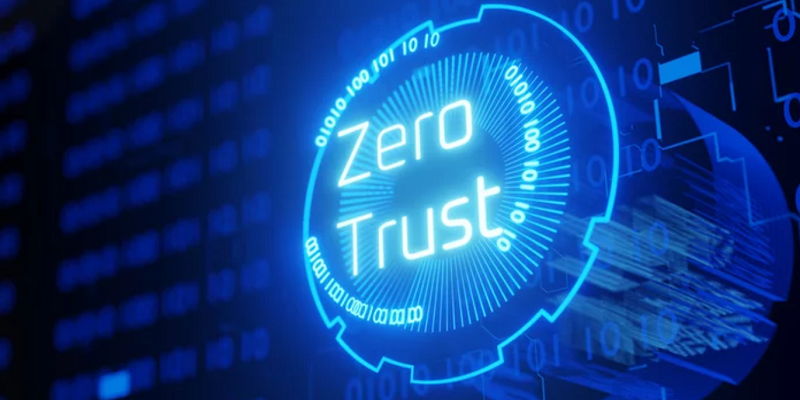In today’s digital world, organizations of all sizes are grappling with the daunting task of implementing effective security measures to protect their valuable data and assets from the ever-increasing threat of cyberattacks. Despite spending billions of dollars on security solutions and employing stringent security protocols, adversarial threat actors continue to successfully breach even the most robust defenses, causing catastrophic damage to businesses and their customers. As the societal adoption of remote and hybrid work environments continues to expand following the COVID-19 pandemic, organizations are faced with an exponentially larger attack surface that leaves them more vulnerable than ever to cyberattacks.
Global spending on best-of-breed security solutions and AI-enabled machine learning tools
According to recent reports, global spending on best-of-breed security solutions and AI-enabled machine learning tools reached record highs in 2021. Organizations are investing heavily to enhance their security posture and fighting capabilities against cyber criminals. While this is a positive step in the right direction, it’s not nearly enough to adequately protect organizations from all the sophisticated threats that they face.
The continued success of adversarial threat actors despite stringent security implementations
It has become clear that even the most stringent security implementations can be bypassed with relative ease by determined adversarial threat actors. This leaves many organizations in a precarious position, as they may not know the extent of the damage caused by the breach until it’s too late. Therefore, it’s imperative that organizations adapt their security strategies to reflect the constantly evolving threat landscape.
The Impact of Remote and Hybrid Work Environments on the Attack Surface
With the societal adoption of remote and hybrid work environments following COVID-19, organizations have integrated cloud technologies, services, and third-party applications into their functional operations on a rapid scale. This new way of working has expanded the attack surface exponentially, allowing adversaries to target a broader range of external vulnerabilities through social engineering campaigns and malware-based attacks. The need for a more agile, resilient, and scalable approach to security is more pressing than ever.
The Need for a Shift Away from Perimeter-Based Controls to Zero-Trust Architecture (ZTA)
To align with these changing dynamics, it’s critical to shift away from the legacy perimeter-based controls of the past in favor of a more agile zero-trust architecture (ZTA) that restricts adversaries from causing irreparable damage after that inevitable breach occurs. The ZTA approach assumes that all devices, users, and applications are not inherently trusted and should be treated accordingly.
The Importance of ZTA in Restricting Adversaries from Causing Irremediable Damage After a Breach Occurs
The main objective of a zero-trust architecture is to restrict an attacker’s movement and limit the damage they can cause, even after they have breached the network defenses. By adopting a ZTA approach, organizations can contain the spread of the attack while investigating and remediating any damage caused. This approach minimizes the disruption to the business and reduces the risk of reputational damage.
The Challenges of Achieving a True Zero Trust Environment
Achieving a true zero-trust environment is not an overnight process by any means. It requires a complete architectural overhaul composed of calculated planning, integration, access/operations management, and verification mechanisms. Organizations need to develop a comprehensive plan tailored to their needs that addresses both technical and operational aspects, including identity and access management, network segmentation, endpoint security, and data protection.
The Components of a Complete ZTA Overhaul
The components of a complete Zero Trust Architecture (ZTA) overhaul include:
1. Calculated Planning: Developing a comprehensive plan tailored to your organization’s needs that addresses both technical and operational aspects.
2. Integration: Integrate the necessary security solutions and tools into your infrastructure to achieve a more seamless, agile security posture.
3. Access/Operations Management: Implementing secure access and operations management protocols that limit access to only those individuals or devices that require it.
4. Verification Mechanisms: Enforcing verification mechanisms, such as multi-factor authentication, to ensure that only authorized users have access to the network.
The Importance of Securing the Hybrid Attack Surface
Organizations with a vast array of resources, systems, applications, and data on a global scale need a security model that can keep pace with the organization’s growth. A flexible security model that can adapt quickly to new threats and rapidly evolving technologies is essential. The Zero Trust Architecture (ZTA) approach is an ideal solution for securing the hybrid attack surface as it enables organizations to protect their critical assets across multiple infrastructures, including on-premises, cloud, and hybrid environments.
With cyber threats on the rise and the attack surface growing with the widespread adoption of remote and hybrid work environments, organizations cannot afford to rely solely on traditional perimeter-based security measures. Zero-trust architecture is a more robust, flexible, and scalable approach to security that provides enhanced protection against a wide variety of cyber threats. By adopting ZTA best practices, businesses can effectively reduce the risk of data breaches, limit the damage caused by an attack, and provide a more secure environment for their employees and customers.

